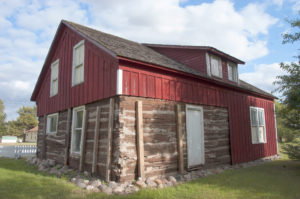
By Dana Hess
For the S.D. Newspaper Association PIERRE —
Big changes may be on the way for football and wrestling after the first reading of handbook proposals at Monday’s meeting of the South Dakota High School Activities Association.
Among the many handbook changes considered were the advent of six-man football and the addition of a dual title to the state wrestling tournament. Starting in the 2019-20 season, six-man football would replace the 9B classification, leaving only two classifications of nine-man football.
The new classification would be open to any school with an average daily membership of 40 or fewer male students. That number was too high for Jay Wammen, head football coach at Harding County.
Wammen said he knew that some coaches would field a six-man team with 30 players on the sideline just so they could have a “powerhouse six-man team.” He suggested the number be cut to 25.
Wammen also noted that six-man football doesn’t offer players the full range of experience they would need to go on to play football in college.
“We hope a lot of our kids get to play at the college level,” Wammen said.
SDHSAA Assistant Executive Director John Krogstrand said the decision to use the average daily membership of 40 was designed to be more inclusive. Board member Sandy Klatt of Brandon Valley asked if the advent of six-man football would mean the dissolution of some football cooperatives. Krogstrand said that might happen, but it would be the only way that some small communities could get back to hosting high school football games.
“They can have their Friday nights back home,” Krogstrand said.
The board approved the first reading of the creation of six-man football on a 5-2 vote. Board members Dave Planteen of Baltic and Steve Morford of Spearfish cast the dissenting votes.
Krogstrand said wrestling coaches have been hopeful that the dual tournament would be reinstated.
“The coaches are hungry to get it back,” Krogstrand said. “If we’re bringing it back, we have to make sure that we do it right.”
Getting it right was the subject of a lengthy debate. The original proposal called for implementing the tournament during the next school year. Some athletic directors in the room, who already had their dual schedules set for next year, balked at making the change so fast.
Some board members agreed.
“I feel like we’re trying to build the airplane while we fly it,:” said board member Brian Maher of Sioux Falls.
The motion that passed unanimously called for implementing the tournament in the 2019-20 school year with SDHSAA staff tasked with figuring out how teams would qualify for the tournament.
In addition to the athletic handbook, first readings were also held for changes to the fine arts handbook. One of those changes included a major change for show choir.
SDHSAA Assistant Executive Director Brooks Bowman said each year fewer teams are taking part in show choir. The change approved Monday would discontinue the State Show Choir Competition to have it eventually replaced by an All-State Show Choir.
“We would not sponsor show choir next year,” Bowman said, explaining that the show choir advisory board is working on the details for the All-State event.
The handbook changes will have their second and final reading at SDHSAA’s June meeting.










